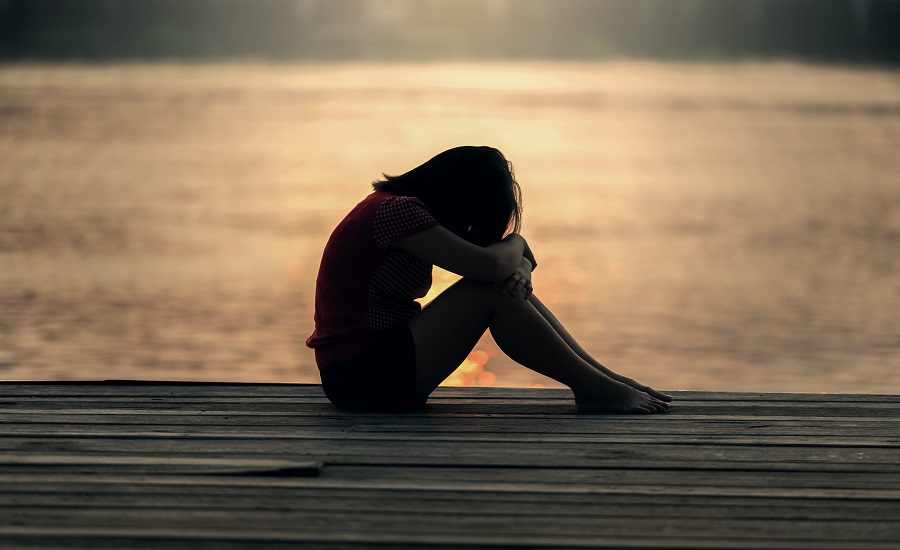Starting the Journey of Grief and Welcoming Life Back
Tragically, the undeniable truth is that each of us will inevitably encounter the profound anguish of grief during our lifetime.
Whether it be the heart-wrenching loss of a beloved family member or the painful farewell to a cherished pet, this emotional ordeal has the power to shatter our world, leaving us in a state of emotional turmoil and uncertainty.
Grief, in all its complexity, is an intimately personal experience. It defies orderliness and linearity, disregarding any semblance of timelines or schedules.
In its wake, it may unleash torrents of tears, provoke fiery anger, induce withdrawal from the world, or leave an unsettling void within. Importantly, none of these reactions are uncommon or incorrect; they are authentic responses to the emotional upheaval that grief brings.
It is paramount that we approach the 7 stages of grief with a degree of flexibility and a keen awareness of individual variations. These stages do not adhere to a strict, step-by-step progression. Rather, they exhibit a propensity to overlap, circle back, or manifest simultaneously.
The question naturally arises: why should we concern ourselves with these stage models? The answer lies in their utility as a valuable compass for navigating the tumultuous seas of grief, offering guidance and insight into the emotional terrain ahead.
But do these stages of grief invariably unfold in a predefined sequence?
Grief, a universal human experience, can manifest as a response to an array of losses, as eloquently articulated by grief counselor Wendy Liu: “Every one of us, without exception, grapples with various forms of loss as we traverse life’s intricate tapestry.” It is crucial to acknowledge that each individual’s journey through grief is inherently unique. While the seven stages of grief serve as a familiar framework, they are far from rigid, often blurring, or even omitting certain stages, and occasionally taking on a distinct hue for each person. Nevertheless, acquainting oneself with these seven elements can prove invaluable in recognizing and navigating the complex spectrum of emotions that accompany the grieving process.
Understanding the 7 Stages of Grief
When grappling with the profound experience of loss, comprehending the intricate tapestry of emotions becomes crucial. This understanding is encapsulated in the 7 stages of grief, each stage representing a facet of the intricate process of coming to terms with loss. Let’s delve into these stages in detail:
Shock & Denial
Initially, shock and denial shield us from the immediate pain of loss. We often react with numbed disbelief, struggling to accept the reality of the loss.
This protective emotional buffer may persist for weeks, allowing us to function on the surface, even as the gravity of the situation remains elusive.
It’s a coping mechanism, a way to navigate the initial impact. Many describe this stage as a sense of numbness, a protective detachment from intense feelings that are too overwhelming to confront.
Denial, in essence, is not disbelief in the event itself but a struggle to grasp the profound alteration it has caused.
Pain & Guilt
As the shock recedes, an excruciating pain sets in. It’s a relentless, almost unbearable suffering. It’s crucial to embrace this pain rather than hide from it.
Guilt often accompanies this stage, leading us to question our actions or inactions regarding the lost one. Life during this phase feels chaotic and frightening.
This is a time when realization dawns that the suffering and pain are part of the aftermath and that, in some cases, they might have been prevented or mitigated.
Anger and Bargaining
Frustration takes hold, and anger surfaces. Blame, often unwarranted, may be directed towards others or even fate itself.
We grapple with the question, “Why me?” and may attempt fruitless bargaining, making promises in a desperate bid to reverse the loss. It’s crucial to manage this stage, as unchecked anger can inflict lasting damage on relationships.
Bargaining is often a futile plea for relief from intense emotions and circumstances.
Depression, Reflection, and Loneliness
At a time when others may expect us to move on, a prolonged period of sadness and reflection envelops us.
It’s a normal aspect of the grieving process that shouldn’t be undermined by well-meaning advice. During this phase, the full weight of the loss becomes evident, leading to a sense of emptiness and despair.
This is a phase for introspection, a period to acknowledge the magnitude of the loss and confront the resulting depression.
The Upward Turn
Gradually, as we adjust to life without our loved ones, a sense of calm and orderliness begins to emerge.
Physical symptoms wane, and the depression lifts, albeit slightly. This is the stage where we start glimpsing a light at the end of the tunnel.
It’s the middle ground of the grieving process, a point where intense emotions like anger and pain begin to subside, leaving us in a more composed state.
Reconstruction and Working Through
This is the phase where we begin rebuilding our lives. Functionality returns and the mind engages in seeking practical solutions to the challenges presented by life without our loved one.
We embark on the process of reconstructing our sense of self and our life’s path. As we regain functionality, practical and financial concerns take center stage, leading to a gradual restoration of our sense of self.
Acceptance & Hope
In the final stage of this grief model, we learn to accept and confront the reality of our situation.
However, acceptance does not necessarily entail immediate happiness. It represents a gradual embrace of a new way of life, infused with a glimmer of hope for the future.
While the pain and turmoil experienced may forever change us, this stage offers the prospect of moving forward, making plans, and eventually finding joy in the experience of living.
It signifies the successful navigation through the 7 stages of grief, a testament to our resilience in the face of profound loss.
Wrapping Up with Final Thoughts
Grief is undeniably challenging. As time unfolds, you might discover moments when you revisit earlier stages, particularly during significant occasions like holidays or anniversaries. Nevertheless, as the days pass, it does get more manageable, and your anguish will diminish. It never vanishes entirely, but you can coexist with your loss.
Admittedly, this is no simple journey, but it’s crucial to maintain open communication with those around you and openly share your emotions. Support is accessible, and even though it can feel profoundly isolating, remember, that you don’t have to face this solitary path without assistance.
Citation
https://www.hcf.com.au/health-agenda/body-mind/mental-health/moving-through-grief
https://www.tandfonline.com/doi/abs/10.1080/07481187.2021.1983890
Photo by Pixabay: https://shorturl.at/BJKU8





One thought on “Embracing the 7 Stages of Grief to Reclaim Life”